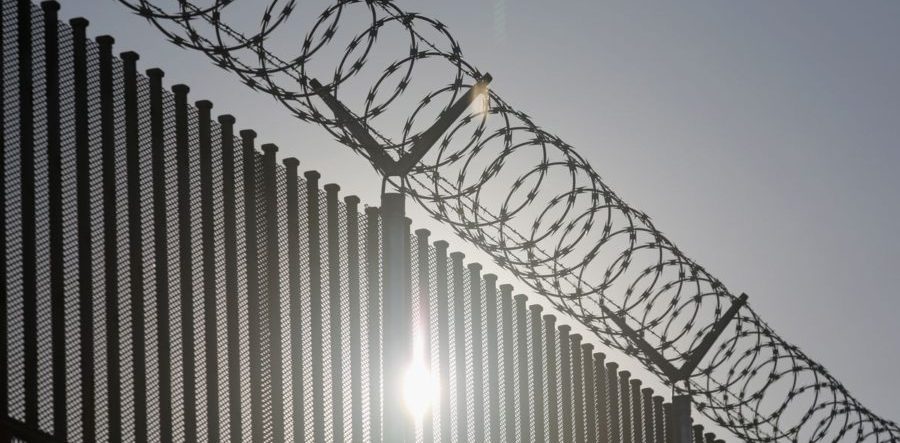The federal government cannot block pregnant, undocumented minors in federal immigration custody from accessing abortions, the D.C. Circuit ruled Friday (June 14).
The decision is the second time the court has rebuked the Trump administration’s efforts to prevent young, unaccompanied migrants from terminating unwanted pregnancies, and the case could now be headed for Supreme Court review.
The case, Doe v. Azar (formerly known as Garza v. Azar), centers on a policy adopted by the administration’s Office of Refugee Resettlement under which the federal government refuses to “facilitate” abortions for pregnant minors while they are being housed in federal custody after attempting to enter the United States. In practice, the administration has refused to approve abortions even when undocumented minors have secured their own funding for the procedure and met all the requirements under state law for getting an abortion. In at least one instance, authorities denied a teenager’s request for an abortion even though her pregnancy was the result of rape.
The policy operates as a “blanket denial of access to abortion for unaccompanied minors” and violates the constitutional right of individuals to terminate their pregnancies before fetal viability, a panel of the D.C. Circuit ruled Friday in an 81-page unsigned opinion.
This is the second time the D.C. Circuit has weighed in on the divisive issue. In October 2017, the en banc court ordered the government to allow an individual 17-year-old in custody to obtain an abortion. That ruling prompted a fiery dissent from then-Judge Kavanaugh. In one of his most famous dissenting opinions during his time on the D.C. Circuit, Kavanaugh accused his colleagues of ushering in “immediate abortion on demand.” Nine months later, President Trump nominated Kavanaugh to the Supreme Court.
Meanwhile, the abortion policy returned to the D.C. Circuit, this time in the form of a class action lawsuit. Rather than merely weighing in on one individual’s right to an abortion, the court was asked to review a district judge’s injunction barring the government from interfering with abortion access for all pregnant, unaccompanied immigrant minors in the government’s custody.
Despite the different procedural posture, Kavanaugh’s 2017 dissent echoed loudly in this iteration of the case. The government, invoking Kavanaugh, sought to frame the case as involving “abortion on demand,” and in Friday’s ruling, a fractured panel of the D.C. Circuit engaged directly with that charged language.
Judges Srinivasan and Wilkins were in the majority, upholding the central tenets of the district judge’s injunction. Judge Silberman dissented, arguing that the injunction should be written more narrowly and should allow the government more leeway to place minors with a private sponsor—which would remove them from government custody and theoretically allow them to get abortions outside of the government’s purview. Silberman ended his dissent by explicitly recalling Kavanaugh’s words from 2017:
I am afraid the majority’s refusal to consider narrowing the scope of the district court’s order justifies Judge Kavanaugh’s accusation that the court is endorsing abortion on demand—at least as far as the federal Government is concerned.
Srinivasan and Wilkins took umbrage at that charge. The court’s ruling, they wrote, merely allows minors to obtain abortions to the extent permissible under the law of the state where they are located—including satisfying requirements such as getting permission from a judge. As they put it:
A regime in which an unaccompanied minor needs to secure a judicial bypass under Texas law cannot be seen as “abortion-on-demand” unless Texas law itself is seen to allow abortion-on-demand.
The bottom line is that, with Friday’s ruling, the injunction remains in effect, meaning unaccompanied minors continue to have a right to access abortion services while they are in immigration custody. (Potentially dozens of minors are affected each year by the ruling. In 2017—the only year for which statistics are available—18 unaccompanied minors in government custody requested an abortion.)
But the case may now be headed to the Supreme Court. Assuming the government seeks a cert petition, Silberman’s dissent seems designed to prod the justices to take the case: he writes that he “candidly” is “troubled by” a key Supreme Court precedent on which the majority relies to find that the case is not moot. And he says the majority’s decision to reach the merits, rather than avoid them on mootness grounds, “blows a hole as wide as the Haleakala Crater in a constitutional restriction on judicial power.”
Kavanaugh’s language may continue to be a defining refrain in the case, but his formal participation is likely over. If Doe v. Azar does reach the Supreme Court, Kavanaugh likely would recuse himself, as he has done in other cases at the Supreme Court in which he participated as a D.C. Circuit judge.
![]()

